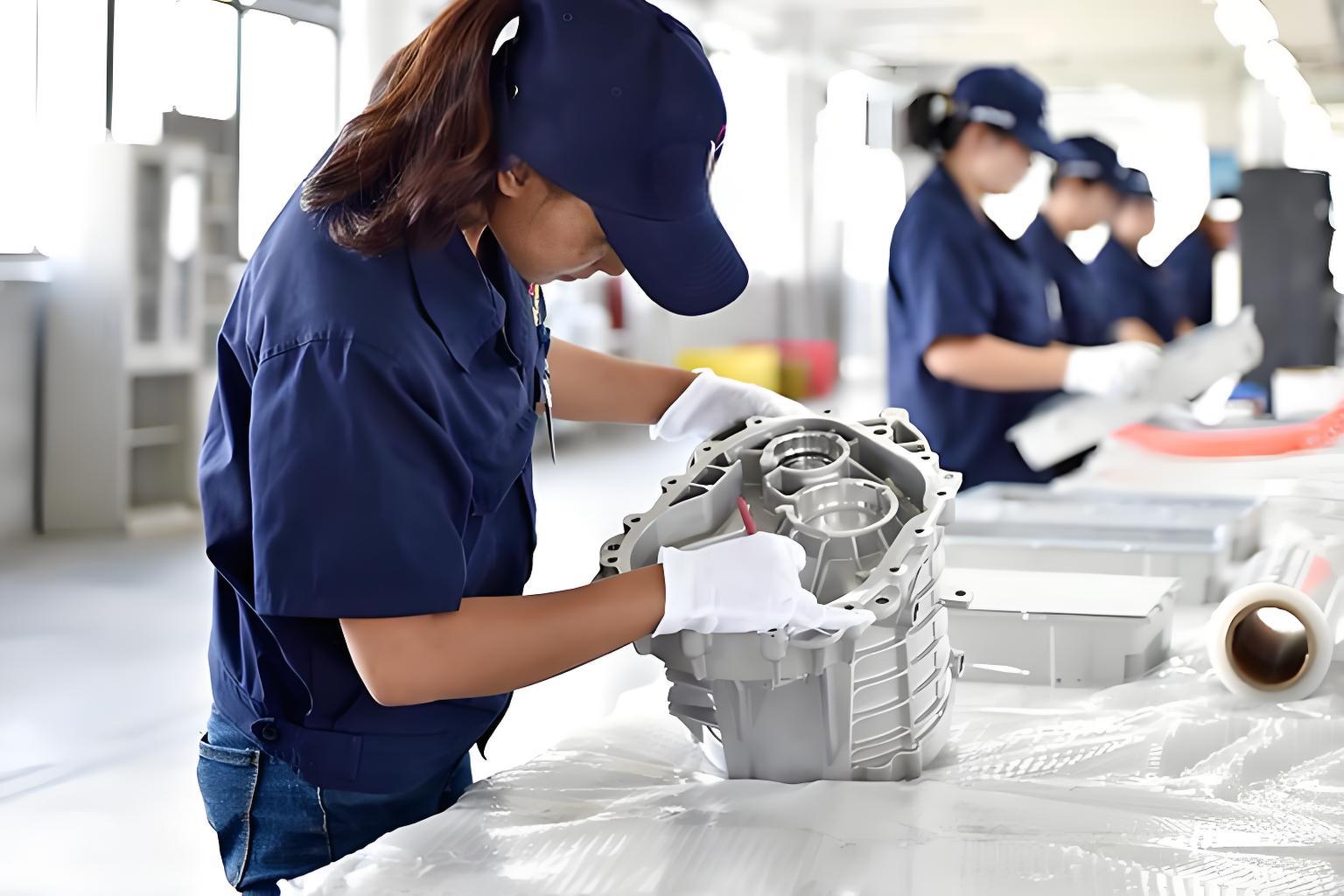
The inspection standards of die casting aluminum alloy mainly include appearance inspection, chemical composition inspection, mechanical properties inspection, dimensional accuracy inspection and internal quality inspection.
Appearance inspection standard
The appearance inspection standard of die-cast aluminum alloy includes the following aspects:
lighting conditions : generally under natural light or 300-600LX approximate natural light
Viewing distance and Angle : the inspector is 600-650mm away from the target, and the viewing Angle is 45-90°
visual acuity requirements : the visual acuity level of the examination is above 1.0 (including correction)
surface grade division : divided into grade A, grade B, grade C and grade D surface, the appearance quality requirements are gradually reduced
Common defects and standards : including cracks, shrinkage holes, pores, flow marks, cold insulation, deformation, burrs, etc. The quantity, size and spacing of all kinds of defects shall comply with the regulations
Chemical composition test standards
The chemical composition of aluminum die casting parts shall comply with the provisions of the corresponding standards, such as GB/T 15115
Test standard for mechanical properties
mechanical properties inspection : when die-casting sample is used for inspection, its mechanical properties shall comply with the provisions of GB/T 15115; If die-casting body test is adopted, the mechanical properties of the sample cut from the specified part shall not be less than 75% of the single-cast sample
dimensional accuracy inspection : The geometric shape and size shall conform to the specification of the drawing, the dimensional tolerance shall comply with GB6414, the form and position tolerance requirements can be referred to GB/T15114
surface quality inspection : no cracks, under-casting, porosity, bubbles and penetration defects are allowed on the surface, and the surface roughness shall meet the requirements of GB/T6060.1
Internal quality inspection standards
The internal quality inspection of aluminum alloy castings includes the following aspects:
internal quality defects : including cracks, pinholes, pores, shrinkage holes, porosity, segregation and inclusions, etc. These defects will affect the physical and mechanical properties of the casting
inspection standard : China's implementation of the standard including GB/ T9438-1999 and HB963-2005, according to the importance of castings are divided into class I, class II and class III castings, different categories of castings inspection requirements are different
Non-destructive testing technology : including radiographic testing (RT), ultrasonic testing (UT), penetration testing (PT) and industrial CT testing (ICT), used for detecting internal defects such as holes, cracks, inclusions

























